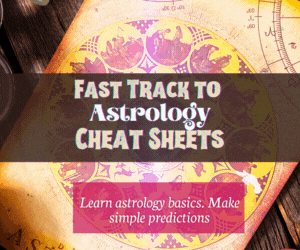
If you’re looking for a step-by-step comprehensive and easy to understand guide on how to read a synastry chart, you’ve come to the right place!
Let me just get you started with this thought in mind – you should by all means have a very good understanding of the individual birth charts first. Through this initial analysis, you will be able to get a pretty good idea of whether someone is a good match for you or not.
How? Well, there are basics like dominant elements, Moon, Venus, and Sun positions that can tell you the story of your relationship straight away. For example, if your Venus is in Cancer, making a trine with Saturn, while their Venus is in Gemini, making an opposition to Uranus, I can tell you straight away that you two need and want completely different things in a relationship.
You are all about stability and building a long-term connection, while the other person is all about diversity, fun and unpredictability in relationships.
I teach you how to do this very first initial analysis in my Free Roadmap To True Love guide, which you should most definitely get hold of if finding true love is your priority in life right now.
Table of Contents
- 1 How to Read a Synastry Chart: The Basics
- 2 Understanding Synastry Charts
- 3 Individual Birth Charts Analysis
- 4 How to Read a Synastry Chart: Interpretation Techniques
- 5 How to Read a Synastry Chart: Analyzing Synastry Aspects
- 6 How to Read a Synastry Chart: The Nature of the Planets
- 7 Significance Within Synastry Charts
- 8 Astrological Entities and their Meanings
- 9 Essential Considerations for Synastry Readings
- 10 How to Read a Synastry Chart: Putting It All Together
- 11 How to Read a Synastry Chart: Planetary Influences and Combinations
How to Read a Synastry Chart: The Basics

Reading a synastry chart is an insightful way to understand the dynamics between two individuals by studying their astrological birth charts.
Synastry, a branch of astrology focused on relationships, can provide valuable insights into your compatibility, attraction, and potential conflicts with others. By analyzing the interplay of planets, signs, and houses within each person’s birth chart, you can gain a deeper understanding of how your astrological influences align with others and affect your relationships.
To begin exploring your synastry chart, you will need accurate birth information for both individuals involved, including the date, time, and place of birth. With this information on hand, you can create a combined chart that overlaps and examines the aspects between the two charts. This process will highlight the points of contact and interaction between your planets, signs, and houses, which can then be used to identify the strengths, challenges, and potential growth areas within your relationship.
As you delve into the world of synastry, it is essential to have a foundation in basic astrology principles, such as understanding the significance of various aspects, planets, and the roles of each zodiac sign. With this knowledge in place, you will be better equipped to explore your synastry chart and gain valuable insights into the unique intricacies of your relationships.
Understanding Synastry Charts

How to Read a Synastry Chart: Synastry Chart Basics
A synastry chart is a powerful tool in astrology that helps analyze the compatibility and dynamics between two individuals. To create a synastry chart, you need both people’s birth charts, which are also called natal charts. These charts are diagrams that represent the position of celestial bodies at the time of their birth. When these two natal charts are overlapped, the resulting synastry chart reveals valuable insights about the relationship’s strengths, challenges, and overall compatibility.
You can get a free synastry chart calculation here.
How to Read a Synastry Chart: Interpreting House Overlays

A crucial component of a synastry chart that has to be analyzed first is the interpretation of house overlays. Houses represent the areas of our lives where the planets and their expressions focus. There are 12 houses in a chart, each corresponding to a specific domain such as relationships, career, communication, and so on.
In a synastry chart, you’ll want to look at where each person’s planets fall in the other person’s houses. This can illuminate how their energies influence and blend within different parts of each other’s lives. For example, if one person’s Venus (the planet of love and attraction) falls in their partner’s 5th house (which deals with romance, creativity, and self-expression), it can signal a strong romantic connection and a playful, affectionate dynamic.
By comprehending the basics of a synastry chart, understanding the role of planets and aspects, and interpreting house overlays, you can gain profound insights into the nature of a relationship and identify key factors that contribute to the connection’s harmony or discord.
How to Read a Synastry Chart: The Role of Planets and Aspects

The second step in synastry chart reading is when each person’s planets are analyzed in relation to the other person’s planets, which can show how their traits and characteristics interact within the relationship. The major aspects to look for in synastry charts include:
- Conjunctions: When two planets are close together
- Sextiles: When planets are 60 degrees apart
- Trines: When planets are 120 degrees apart
- Squares: When planets are 90 degrees apart
- Oppositions: When planets are 180 degrees apart
These aspects can indicate compatibility or discord, depending on the planets involved and the nature of their interaction.
Individual Birth Charts Analysis

Before diving into a synastry chart, it is essential to analyze each person’s individual birth chart. A birth chart, also known as a natal chart, represents the positions of the planets, signs, and houses at the exact moment an individual was born. It serves as a map of the heavens, imprinting a celestial blueprint onto each person’s life.
To begin, familiarize yourself with the three key components of a natal chart:
- Planets: Represent the energies affecting different aspects of your life. Each planet has a unique set of qualities and characteristics.
- Signs: Indicate how each planet’s energy is expressed. The 12 zodiac signs are associated with specific traits and behaviors.
- Houses: Describe the different life areas affected by the energies of the planets and signs. There are 12 houses, each representing a different domain in our lives.
Start by examining the positions of the planets in your birth chart. Note how each planet’s position in a specific zodiac sign influences its expression. For example, if your Venus is in Taurus, your approach to love and relationships may be more sensual and focused on comfort than if it were in another sign.

Next, analyze the houses in your chart. Determine which house each planet resides in and how that affects your life. For example, if your Sun is in the 10th house, your career and public image may be significant to your sense of self.
Don’t forget to consider the connections between planets, known as aspects. These connections reveal how the energies of different planets combine and interact with each other. For instance, Mars trine Jupiter might indicate a confident and assertive approach to expanding your horizons.
After gathering insights from your birth chart and the chart of your partner, you can proceed to compare the both readings together.
You can also Download My Free Roadmap To True Love guide, which teaches you how to analyze compatibility based on your own birth chart.
How to Read a Synastry Chart: Interpretation Techniques

Sun and Its Positional Impact
The Sun’s position in a synastry chart represents your core being, personality, and overall sense of vitality. When interpreting a synastry chart, it’s essential to consider how the Sun’s position impacts both individuals in a relationship. To do this, take note of the house the Sun occupies, as well as the aspects it forms with other planets.
- Houses: Each of the 12 astrological houses corresponds to specific areas of life. For example, if your Sun is located in your partner’s third house, it indicates strong communication and intellectual connection between the two of you.
- Aspects: When the Sun forms aspects with other planets, it can reveal challenges or harmonious dynamics. For instance, a Sun trine Venus in the chart denotes a deep affinity and attraction between partners.
The Influences of the Moon

The Moon’s placement in a synastry chart provides insight into your emotional nature, instincts, and overall sense of comfort. In the context of a relationship, it’s essential to consider how the Moon’s position affects both individuals. Similar to the Sun, focus on the house placement and aspects the Moon forms with other planets.
- Houses: The Moon’s house position reveals the emotional climate of the relationship. If your Moon falls in your partner’s tenth house, it suggests a supportive partnership centered around career or public life.
- Aspects: Moon aspects can indicate emotional harmony or challenges. For example, a Moon square Mars suggests strong emotional reactions and potential conflicts between partners.
Venus and Mars: Love and Passion

In synastry, Venus and Mars play crucial roles in determining compatibility within relationships. While Venus represents love, affection and values, Mars symbolizes passion, assertion and drive.
- Venus: Venus’ placement in a synastry chart can reveal harmony or tension in the way you both express love. Examine the house position and aspects Venus forms. For example, when your Venus is in your partner’s second house, you may share a mutual appreciation for material comforts and stability.
- Mars: The position of Mars in a synastry chart reveals how passion and assertiveness are expressed in your relationship. Consider the house placement and aspects Mars forms. For instance, a Mars sextile Pluto might indicate a deep, transformative impact on both partners through developing shared passions and goals.
Remember, each synastry chart is unique, so consider all elements together when interpreting your relationship dynamics. By understanding the Sun, Moon, Venus, and Mars‘ influences, you can gain valuable insights into your compatibility and potential areas of growth in your relationship.
How to Read a Synastry Chart: Analyzing Synastry Aspects

Understanding the Square
A square aspect is formed when two planets are 90 degrees apart in a synastry chart. This aspect typically indicates tension and challenges in the relationship. Both partners may need to find ways to resolve conflicts and accept each other’s differences.
For example:
- Mars Square Venus: Indicates a strong attraction, but also potential disagreements in expressing love and affection.
- Sun Square Moon: Reveals potential emotional misunderstandings, often requiring effort to harmonize one’s desires and emotional needs.
A synastry chart with a lot of square aspects often indicates a karmic relationship, i.e. a relationship that is here to teach you a lesson and lead to some transformations and personal growth. Many square aspects, especially with the south node usually indicate a karmic rope that needs to be resolved in this lifetime, rather than a soulmate connection.
The Power of Conjunction

Conjunctions occur when two planets are in the same sign or close to each other in a synastry chart, representing the merging of energies. This can lead to a powerful connection, amplifying the qualities of both planets.
Some examples of conjunctions include:
- Sun Conjunct Venus: Enhances affection and harmony, fostering a strong loving bond.
- Mars Conjunct Saturn: Increases the potential for discipline, commitment, and perseverance in achieving goals together.
Harmony of Trine and Sextile

Trine and sextile aspects are considered harmonious in synastry, as they present opportunities for growth and ease in the relationship. A trine is formed when two planets are 120 degrees apart, while a sextile occurs at a 60-degree angle.
Some notable trine and sextile aspects are:
- Mercury Trine Jupiter: Fosters strong communication, understanding, and intellectual compatibility.
- Moon Sextile Neptune: Encourages emotional sensitivity, compassion, and a spiritual connection.
Keep in mind that oppositions, formed when two planets are 180 degrees apart, can also play a significant role in synastry charts. They often indicate attractive opposites, balance, and the potential for growth, but may require compromise and empathetic understanding to maintain harmony.
As you analyze the aspects in your synastry chart, remember to consider the planetary influences in relation to one another and how they can help you better understand the dynamics of your relationship.
How to Read a Synastry Chart: The Nature of the Planets

When analyzing a synastry chart and its aspects, you should also consider the nature of the planets in the aspect involved.
For example, a square between Moon and Venus, which both represent feminine, soft energy is not the same as a square between Pluto and Mars for example or Pluto and the Moon. When a planet like Saturn, Pluto, Uranus and Neptune is involved in a square, then it should be given more weight and significance.
Saturn squares, conjunctions and oppositions speak of limitations and restrictions, imposed from one individual to the other. These aspects are also an indication of a karmic rope relationship rather than a soulmate connection. If Saturn makes such an aspect with a planet like the Moon or Venus, the Moon/Venus person is likely to start feeling depressed and overly restricted to express themselves in the presence of the Saturn person.
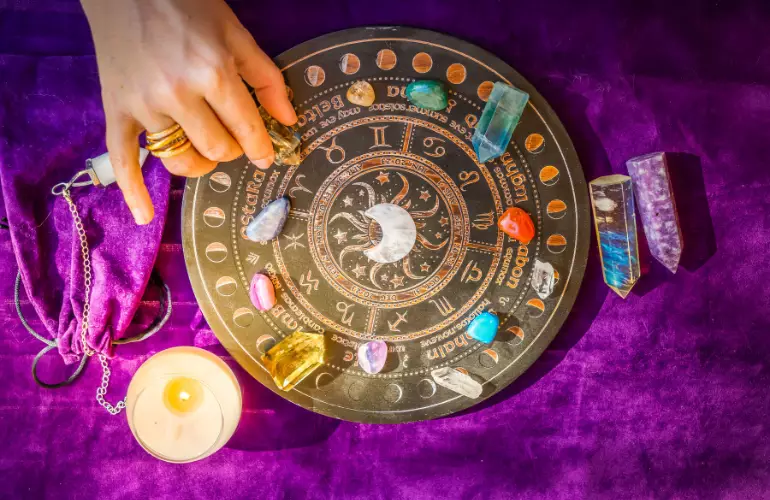
Pluto aspects speak of deep intensity and a relationship that was formed in order for you to make a major psychological transformation. These aspects also indicate a deep karmic bond, but squares between Pluto and Mars and Pluto and Saturn may also indicate an abusive relationship, while Pluto-Moon squares may speak of emotional manipulation and abuse.
Squares with Neptune reveal an energy of illusion, lies and misunderstandings in the relationship. Also a victim-oppressor relationship or a relationship in which one person has to sacrifice too much of themselves for the other.
Uranus squares speak of tension that comes from unexpected events or behavior of one person.
Significance Within Synastry Charts
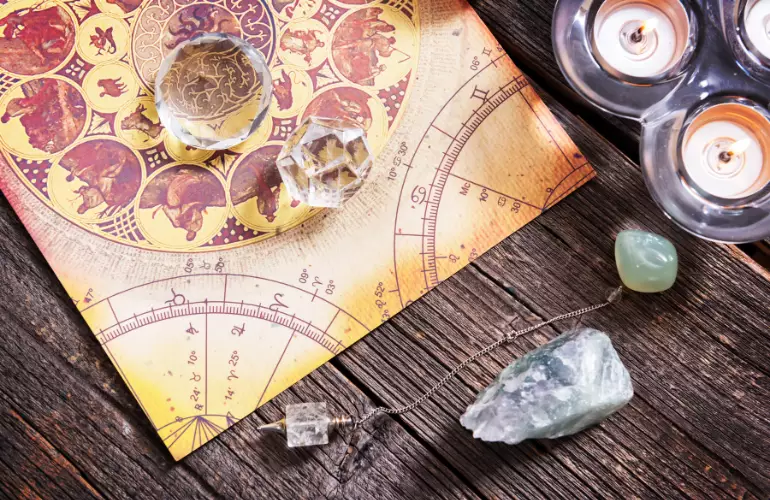
Compatibility Indicators
Synastry charts are a valuable tool in relationship astrology, as they help to assess the compatibility between two individuals. By examining the interplay between the natal charts of both individuals, you can gain insights into the strengths and challenges present within the relationship.
Major factors within a synastry chart that indicate compatibility include:
- Aspects: The geometric angles between planets in the two charts depict how their energies interact, with each aspect having a unique significance. For example, trine and sextile aspects represent harmony and ease, while squares and oppositions can indicate tension.
- Elemental Balance: Assessing the compatibility of the elements (Fire, Earth, Air, Water) within the charts provides insight into the overall dynamic of the relationship. A balanced mix, such as your partner’s Water-sign planets complementing your Earth-sign planets, can create a strong foundation for partnership.
- House Overlays: When your partner’s planets fall into specific houses within your own chart, this can offer insights into how their energy affects you in particular areas of life. For instance, your partner’s Venus in your 7th House may inspire a desire to commit and create a strong foundation for long-term love.
Dynamic Interplay Between Charts

Aside from compatibility indicators, synastry charts also reflect the dynamic interplay between both individuals, which can provide a more comprehensive view of the relationship. Some areas to consider include:
- Nodes and Vertex: The North and South Nodes, as well as the Vertex, are crucial points that represent destiny, karma, and fateful connections. A strong connection between these points in both charts may exhibit a sense of purpose and spiritual growth within the relationship.
- Challenging Aspects: While challenging aspects (such as squares and oppositions) can sometimes indicate areas of tension, they may also serve as opportunities for growth and transformation. It’s essential to recognize these aspects as potential learning experiences to work through together as a couple.
- Planetary Pairings: The interaction between specific pairs of planets can offer significant insight into relational dynamics, such as the Sun-Moon, Venus-Mars, and Mercury-Mercury pairs. Examining the aspects between these pairs can provide a deeper understanding of emotional needs, passion, and communication within the relationship.
In summary, by evaluating the compatibility indicators and dynamic interplay between the two charts, you can better understand the foundation and nature of your relationship, ultimately empowering you to make more informed decisions and foster deeper connections.
Astrological Entities and their Meanings
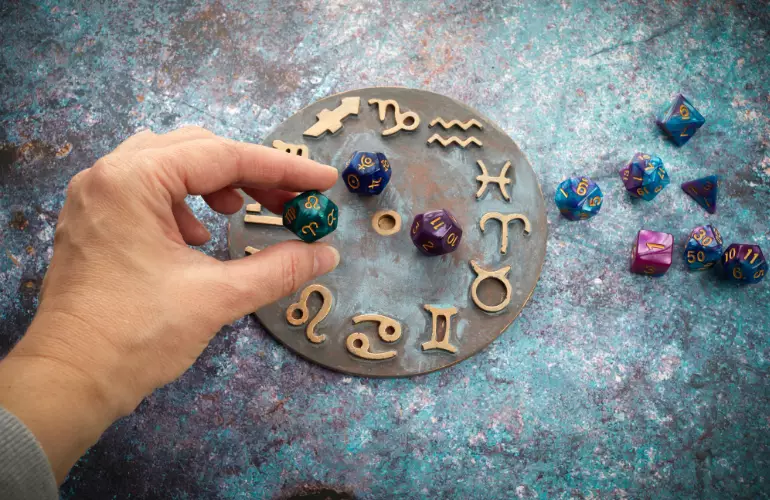
Grab my Fast Track To Astrology Cheatsheets to easily and effortlessly learn the higher and lower manifestations of each planet, zodiac sign and house.
When delving into the world of synastry charts, it’s essential to familiarize yourself with the key astrological entities and their meanings. Synastry is the study of how individuals’ astrological charts interact, providing insights into relationship compatibility. The zodiac signs play a significant role in gauging compatibility, as each sign has distinct characteristics, strengths, and weaknesses. We’ll explore the meaning behind each zodiac sign and their potential impact on relationships.
Aries (March 21 – April 19) represents courage, self-confidence, and enthusiasm. In relationships, Aries are passionate and assertive, often taking the initiative.
Taurus (April 20 – May 20) values stability, comfort, and reliability, making them linkable to commitment and loyalty in relationships. However, they may also be prone to possessiveness.
Gemini (May 21 – June 20) is known for adaptability and versatility. In relationships, Geminis offer a dynamic and engaging presence, though they may struggle with emotional depth.
Cancer (June 21 – July 22) is associated with nurturing, empathy, and emotional resonance. In relationships, Cancers tend to be caring and compassionate partners.
Leo (July 23 – August 22) exudes confidence, warmth, and generosity. They can be intensely passionate and loving in relationships, while also valuing loyalty.
Virgo (August 23 – September 22) is detail-oriented and analytical, deeply committed to improvement. In relationships, Virgos offer attentive care and devotion, but may struggle with overly critical tendencies.
Libra (September 23 – October 22) symbolizes harmony, balance, and diplomacy. In relationships, Libras seek fairness, tenderness, and partnership.
Scorpio (October 23 – November 21) has a reputation for intensity, passion, and depth. In relationships, Scorpios can be fiercely loyal yet sometimes suspicious or jealous.
Sagittarius (November 22 – December 21) embodies adventure, optimism, and independence. In relationships, they are supportive and inspiring, but may struggle with commitment.
Capricorn (December 22 – January 19) emphasizes responsibility, discipline, and ambition. They can be steadfast, supportive partners, but may struggle with emotional expression.
Aquarius (January 20 – February 18) is associated with innovation, social consciousness, and originality. In relationships, Aquarians are friendly and intellectual, yet may find it challenging to establish deep emotional connections.
Pisces (February 19 – March 20) represents empathy, artistic expression, and spiritual connection. Pisces are often generous and attuned to their partners’ emotions, although they may struggle to maintain boundaries in relationships.
Understanding the traits of each zodiac sign will provide a broader context for interpreting synastry charts and assessing astrological compatibility. Considering the ways in which each sign connects and interacts with others can offer valuable guidance in navigating your relationships.
Essential Considerations for Synastry Readings

When reading a synastry chart, it is essential to understand the specific key elements of the chart and how they interrelate. I
Planets and Their Aspects: When examining synastry, focus on the planets of the individuals and the aspects they form with one another. The planets represent different parts of the individual’s personality, such as their motivations, behavior, and emotions. Certain planetary aspects reflect the potential strengths and weaknesses in the relationship. For example, a harmonious aspect between Venus and Mars might indicate a strong attraction, while a challenging aspect between Saturn and the Moon may signal emotional restrictions.
Signs and Their Elements: Each planet is situated in a specific zodiac sign, which colors how the planet is expressed. The 12 zodiac signs are divided into four elemental groups: Fire (Aries, Leo, Sagittarius), Earth (Taurus, Virgo, Capricorn), Air (Gemini, Libra, Aquarius), and Water (Cancer, Scorpio, Pisces). It’s important to look at the compatibility of the elements, as some naturally work well together. For instance, Fire and Air usually share a strong sense of adventure and spontaneity, while Earth and Water tend to find comfort and security in each other’s presence. This helps identify areas of growth and comfort in the relationship.

Grab my Fast Track To Astrology Cheatsheets to easily and effortlessly learn the higher and lower manifestations of each planet, zodiac sign and house.
Houses and Their Significance: The houses in a synastry chart represent different areas of life and the context in which the planets interact. Pay attention to which houses the planets from one person’s chart fall in the other person’s chart. This can provide insight into where their energies will play out and in which domains of life they have the most impact. For example, your partner’s Sun in your 7th house might imply a significant role in your partnerships and close relationships.
BE MINDFUL of the following aspects when reading a synastry chart:
- Strengths: Identify those aspects, placements, and elemental combinations that promote harmony and support in the relationship. These are the areas where you both can grow together and feel comfortable.
- Weaknesses: Acknowledge the challenging aspects and placements in the chart, such as oppositions and squares. These show areas in which you may need to work on and address conflicts in order to overcome difficulties and promote growth.
- Growth Opportunities: Recognize the aspects and positions in the chart that encourage personal and relationship growth. They represent areas where both parties can evolve, learn and help each other to develop on a deeper level.
- Comfort Zones: Determine the areas of the relationship that provide stability, security and a sense of familiarity. These are the supportive sectors that allow the relationship to thrive, providing a solid foundation from which to grow.
By integrating these essential considerations, you’ll be well-equipped to understand your synastry chart and navigate the intricacies of your relationship with clarity and confidence.
How to Read a Synastry Chart: Putting It All Together

When reading a synastry chart, it’s crucial to understand the key elements and how they interact. As an astrologer, you will focus on the aspects, planets, and houses in two individual’s charts, analyzing how they come together in harmony or create tension.
To effectively interpret synastry charts, here’s a step-by-step process to follow:
- Collect birth information: For both individuals, gather their birth date, time, and location. Accurate information is essential for generating a precise chart.
- Overlap the two charts: Place one chart on top of the other, aligning the house cusps. This enables you to examine the interaction between the planets, houses, and aspects of both individuals.
- Examine house overlays: Observe which houses the planets of one person fall into the other person’s chart. House overlays provide insight into the areas of life where the individuals can support or influence each other.
- Analyze planetary aspects: Look for aspects between the individual’s planets, such as conjunctions, squares, trines, sextiles, and oppositions.** Bold or significant aspects**are critical in understanding the relationship dynamics.
- Consider the roles of the Sun, Moon, and Venus: These celestial bodies play significant roles in relationships:
- The Sun represents one’s core identity and will
- The Moon reveals emotional bonds and needs
- Venus provides insight into love and attraction
By understanding these planetary influences, you can delve into the compatibility and areas of growth within a relationship.
- Composite charts: In addition to synastry charts, you may also examine composite charts that combine both person’s natal charts into a single chart, representing the relationship as a separate entity. Comparing synastry and composite charts can offer a deeper understanding of the relationship dynamics.
As you practice reading synastry charts, your ability to discern the nuances of interpersonal relationships will grow, enabling you to provide valuable insights and guidance to those seeking your expertise.
How to Read a Synastry Chart: Planetary Influences and Combinations
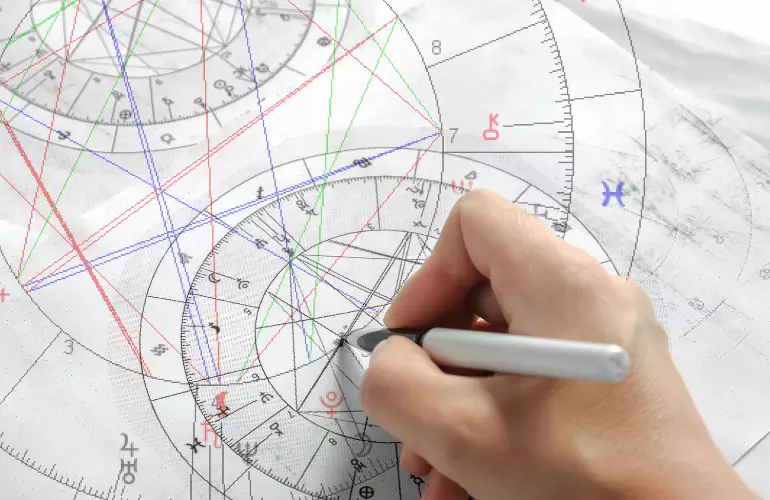
In the realm of synastry, planetary influences play a significant role in understanding the dynamics of your relationship with another individual. Let’s take a closer look at some of the vital planetary combinations and influences.
Saturn: Often referred to as the “teacher” planet, Saturn plays a crucial role in synastry. It represents structure, commitment, and discipline. When your Saturn aspects another person’s chart, it may highlight areas where you can help them mature and establish a solid foundation in their life.
Jupiter: Known for its expansive energy, Jupiter promotes good fortune, optimism, and growth. In synastry, Jupiter’s influence can bring a sense of abundance and happiness to the relationship, encouraging both individuals to explore new horizons and expand their knowledge together.
Mercury: As the planet of communication, Mercury’s influence is essential in synastry. It indicates how effectively you and your partner engage in verbal and mental exchanges. When Mercury aspects align harmoniously, conversations flow effortlessly, and misunderstandings can be quickly resolved.
Uranus: Uranus, the planet of unexpected surprises and innovation, provides excitement and inspiration in synastry. When well-aspected, it can represent a relationship where both individuals feel motivated to explore new adventures and keep things fresh. However, an ill-aspected Uranus may create instability and unpredictability.
Neptune: Neptune’s powerful, dreamy, and imaginative energy can bring significant spiritual and emotional depth to a relationship. When positively placed, Neptune fosters a deep sense of empathy and compassion, creating a strong emotional bond.
Pluto: Known as the planet of transformation and growth, Pluto can create intense and profound changes in a relationship. Well-placed Plutonic aspects stimulate mutual growth and help in uncovering deep-seated emotional issues that need to be acknowledged and healed.
Chiron: Often referred to as the “wounded healer,” Chiron represents our deepest pain and how we can heal ourselves and others. In synastry, Chiron’s placement can show where you can help your partner heal, as well as areas where they can help you heal in return.
By understanding these planetary influences and combinations, you can gain helpful insights into the dynamics and potential of your relationship. Remember that synastry is only a piece of the puzzle, and each chart and relationship is unique. Utilizing this knowledge will ultimately help you create a more fulfilling and harmonious bond.
